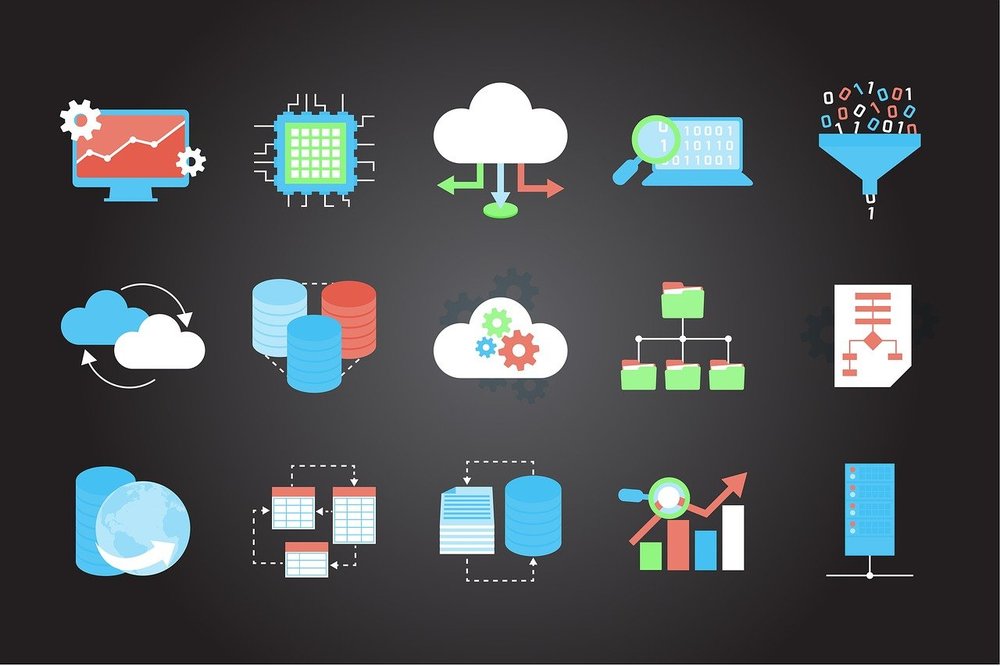This article is part of a blog series on the Virtual Design and Construction world. What can we expect it to bring to the construction industry?
Stanford University created VDC in 2001 to increase productivity in the construction industry.

VDC is a digital technology that strategically integrates various approaches to manage construction projects like information systems, processes, and information workflows between and among project teams.
VDC is dedicated to improving how the AEC industry organizes, conceptualizes, and executes design and construction to improve the decision-making process, address the construction’s productivity issues, and innovate to build quality constructions.
The VDC's new approach is that planning and construction are reviewed digitally, at an early stage of the design phase before any real construction happens to save time and money.
Owners, designers, contractors, subcontractors, and the maintenance team are involved in the project strategy, collaborate in a virtual environment, and evaluate various options such as materials and sequencing.
In VDC you build your project once digitally and once physically, and you apply that concept to the entire construction process.
According to Statista revenue in the Construction and Design Software market is projected to reach US$10.8 bn in 2024. Most revenue will be generated in the United States (US$5,420.00m in 2024).
Revenue is expected to show an annual growth rate (CAGR 2024-2028) of 1.83%, resulting in a market volume of US$11.6bn by 2028.
In residential and commercial construction, the increasing complexity of customer requirements, and the complexity of building processes are fueling the growth of the global VDC market.
Combining VDC and BIM allows the automation of construction processes and puts the focus on modeling the project and how the construction will appear and work when in use.
The COVID-19 pandemic and the shortage of skills experienced by the construction industry have drawn attention to technology and tools that drive productivity.
VDC is a possible solution to deliver projects on time and within budget, improve the building experience at every stage of the project’s life cycle, and translate client expectations and performance objectives into a Building Execution Plan (BEP) to deliver a coordinated implementation and delivery of the project.
The process of VDC modeling of a project starts during the design phase, describes, and visualizes the construction details, and determines the construction process including the operation of the building.
Without BIM and VDC, you may struggle to interact and collaborate, visualize the project, describe the elements that make up the building (floors, walls, beams, etc.), define the different teams that will execute the activities, or achieve the objectives of the project.
VDC involves multidisciplinary teams. A VDC specialist generates VDC models and coordinates the various disciplines involved in a project.
If your firm does not have a VDC specialist, you can outsource the VDC functions to an external consultant.
The role of the VDC specialist consists of coordinating the work of all the teams, moving planning and decision-making to the beginning of the construction process, reducing risks, assessing performance, reducing costs, scheduling overruns, and digitally working out the big problems in the design phase.
Technologies are product and process modeling tools, organizational visualization software, online collaboration tools, photo-realistic representations of built spaces, and communication via video conferencing.
For example, Mortenson Construction, a U.S.-based, top-20 builder, developer, and engineering services provider serving the commercial, institutional, and energy sectors, is using VDC to solve design problems and deliver better services to its clients.

The Singapore VDC Guide is a worldwide reference, in terms of guidelines, for the VDC implementation. The Framework defines the following objectives establishing a common understanding of the definitions, components, and principles of VDC, and providing a framework to guide VDC implementation in building projects or for organizational improvement.
According to the ConTech Construction Technology Report 10th edition, 45% of project management workflows rely on spreadsheets, even in large, complex, and innovative construction projects.
Updating a spreadsheet is prone to human error and makes errors challenging to catch before they become a problem. It is arduous to limit users' access rights, and wrong information is onerous and painful to trail. You need to know when it was inputted, by whom, and why.
To illustrate our point, here are some issues in the construction industry that can be resolved with VDC. Reworks represent 12 to 15% of total project costs in the US. This is due to poor planning and collaboration, no technology integration, bad data management, and a lack of quality control measures.
These problems can be mitigated by using management software on the cloud like Plannerly. Such systems will solve issues with integration and interoperability, data integrity, planning, and decision-making.
Due to strict deadlines, it is easy not to plan early, or plan at all, during the planning and design phases. Critical decisions are not made, changes, reworks, and decisions do not happen when issues are uncovered, and stakeholders have no control over the consequences of those changes.
Virtual design, construction methodology, and lean management are offering solutions to these issues.

Lean management is a methodology used in VDC that helps construction companies to schedule delivery times with the consent of all team members by using the right materials, agreeing on tasks collaboratively, and reducing waste (57% in some cases).
The five principles are:
The advantages of using lean construction are improving productivity, reducing costs, agreeing, and adhering to the contract terms, enhancing safety and quality, boosting customer satisfaction, adopting collaborative work, and generating higher profit.
Lean teams build virtual models and develop a digital twin of an asset, understand timelines and concepts to meet expectations, achieve performance goals, work out construction task sequencing, and define, plan, design, construct, operate, and share data to capture dependencies in various models when changes are made.

How do VDC benefits add to the bottom line and ensure its future?
Visualizing construction in 3D or immersive technologies helps to identify and mitigate potential safety risks that could arise during construction or once the building is occupied and operational.
Implementing safety measures may avoid damage to the structure limit legal liability for project owners, designers, and construction teams, and predict hazardous situations before construction starts to prevent accidents.
Material waste in construction projects is not easy to control, resulting in over 75% of construction waste not being repurposed or recycled.
The Environmental Protection Agency (EPA) found that total waste from construction-related projects was twice as much as the municipal waste from households and businesses in 2018.
The US generates the most household waste by volume of any country.
To reduce waste with VDC you can use processes like collaboration for modeling, integrating all subsystems, and building components to ease cross-functional design reviews.
VDC minimizes site visits for architects, engineers, and other professionals as they can assess construction issues and risks remotely, preventing delays and saving costs.
The VDC handover process to project owners upon completion of construction includes a 3D model, which is superior to traditional drawings or blueprints. These models help plan and guide both routine maintenance and required repairs.
Identifying project hazards in traditional construction projects is based on prior experience and risk management expertise. VDC accurately identifies the potential risks of each project to minimize surprises and keep schedules and timelines on track.
For example, Mortenson construction was able to reduce schedules by 32 days on average using VDC.
VDC permits project teams to assess different energy efficiency scenarios, reduce carbon emissions by using innovative and reused materials, and mitigate environmental impacts by running simulations scaling up electricity consumption in the future.
VDC provides total control of the design and construction process by limiting unforeseen events in the construction process, speeding up construction times, optimizing economic and professional resources, and adding value to the project.
VDC focuses on understanding the responsibilities of the various groups and disciplines to improve the detailed model and construction process, facilitate the distribution of tasks and objectives amongst all stakeholders, enhance the coordination of trades, and avoid overlaps and unforeseen events.
VDC improves collaboration working on a single model by facilitating the coordination of the different disciplines, seamlessly transmitting information among all people involved, standardizing criteria, and creating a collective awareness of the project status.
For example, all stakeholders do not know how to interpret technical drawings and documents. VDC allows governmental municipality leaders without a technical background, and members of the public to understand what a project encompasses, using visualization tools and animations.
The virtual model of the proposed design and a great BIM Execution Plan allow it to impress owners. Sales and business development teams leverage the VDC model to show the owner or developer alternate design and material options with the ability to make decisions and see differing results instantly, eliminating useless revisions between the VDC team and the sales department.
Improve estimate accuracy. VDC produces reliable estimates for bid purposes, post-award project planning and budgeting, and winning bids resulting in a profitable project.
Accurate planning and scheduling. The transparency gained through collaboration, and the integration of virtual design and BIM software allows cost estimates to evolve through the project life cycle and deliver full profit potential.

The size of your construction projects will affect the ratio cost/benefit of the VDC, so before implementing it I recommend you make sure that it is justified. The construction industry's mentality is to implement new systems or tools only if they produce a high short-term return on investment. Unfortunately, VDC projects are adding value and making better use of resources which can take some time to produce a good return on investment.
For example, in Boston, the “Big Dig”, a highway project to decongest the town center ended up five times over its initial budget.
Montreal Olympic stadium, built in 1976, costs were so hugely over budget that it took 30 years to reimburse the debts
The Brandenburg Airport project in Berlin started in 2006, and the first flights took off in 2020, ten years later than scheduled.
The main reasons for these overruns are lack of communication, poor definition of activities, and low productivity. Cloud-based construction software helps your project team to collaborate to provide resources, people, equipment, and material on time. It gives you full visibility of your project progress in real time.
Investing in VDC implementation may require spending a significant amount upfront with a long-term payoff.
Before rejecting VDC, consider that the construction industry's traditional processes are archaic and incoherent. By moving to VDC you can help the project teams to collaborate more effectively, integrate processes, people, and the product into models, address common sources of risk before they lead to costly, time-consuming rework, tackle big problems like sustainability, safety, and transparency, and give all stakeholders access to interactive visualizations of the project.

VDC methodology implies a strong initial investment into new building or infrastructure construction processes to be viewed comprehensively. You may consider a variety of disciplines that must collaborate to account for construction becoming more complex.
AEC firms use VDC in various ways. It is valuable for complex projects like infrastructure or multi-building projects. It can be used wherever construction teams can implement it. VDC is an excellent tool for lean construction methodologies and prefabrication.
Driving Vision's technology diagnostic looks at the best way to incorporate modern technology into your workflows and how to move your organization to the use of immersive technology so you can open new possibilities for your daily planning tasks.
The technology appraisal report will help you explore the investment you require to improve your projects’ productivity and collaboration and the ROI you expect.
Implementing BIM can be daunting, but Driving Vision is here to help you at the pace you are comfortable with. Get started by getting in touch now
We simplify the difficult and automate the mundane for an affordable fee
We become your BIM coordinator & Tech support for an affordable fee
We give you access to our CAD licenses for an affordable fee
We introduce you to our cloud technology and proprietary immersive technology for an affordable fee
